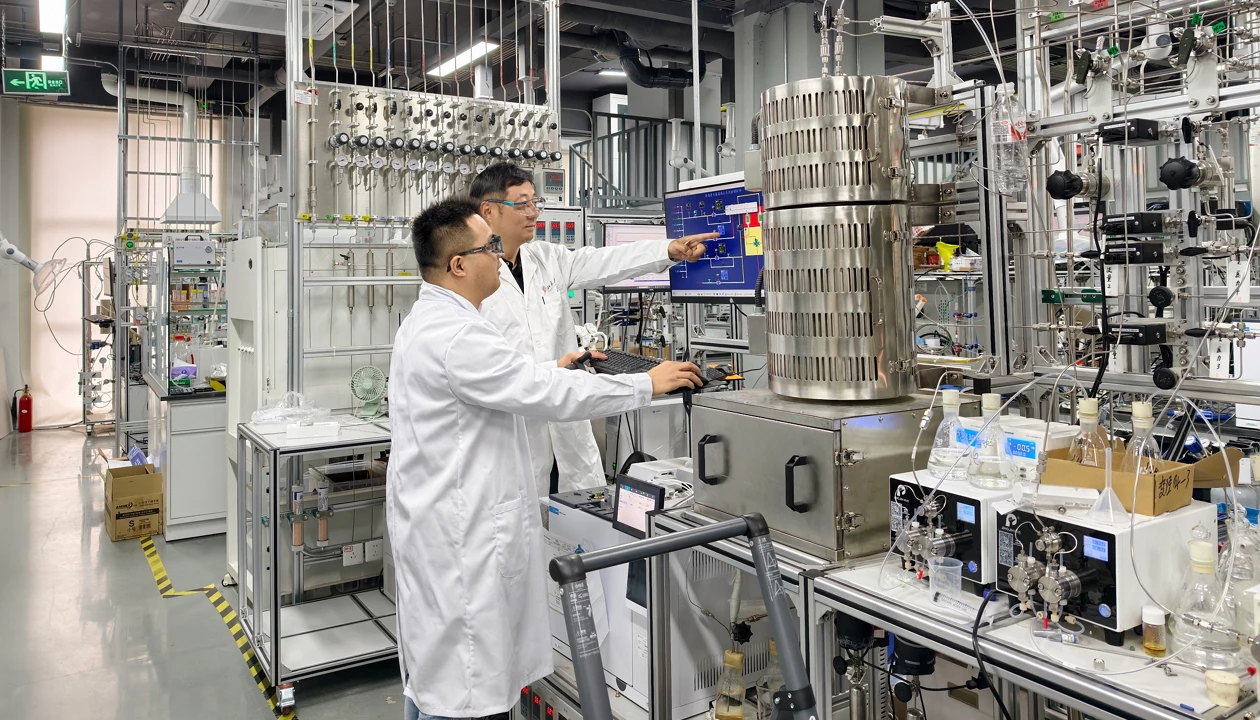For almost a century, the industrial Fischer-Tropsch (FT) process has been used to convert syngas—a blend of carbon monoxide and hydrogen—to liquid hydrocarbons. Now researchers in China have discovered that adding a trace of bromomethane to syngas can almost eliminate unwanted carbon dioxide emissions from the process while increasing the output of valuable olefins (Science 2025, DOI: 10.1126/science.aea1655). “I think this could be accommodated in existing Fischer-Tropsch plants,” says Ding Ma of Peking University, one of the leaders of the research team.
China and India increasingly use coal gasification to produce syngas, which feeds FT reactors that produce liquid fuels and other petrochemicals. But this approach can also be applied to other carbon feedstocks, including natural gas, biomass, or even waste plastic.
More than two-thirds of global FT capacity depends on cheap iron-based catalysts, but they promote side reactions that generate a lot of CO2 emissions. In particular, the water-gas shift reaction turns CO and water into CO2 and hydrogen, and the Boudouard reaction converts CO to CO2 and carbon. Consequently, CO2 can account for 18–35% of FT output—bad news for climate change, and for process efficiency.
Ma’s team found that adding just 20 parts per million (ppm) of bromomethane into the feed gas can block these side reactions when the FT process is mediated by a variety of iron carbide catalysts, including a commercial catalyst. They suggest that about 30% of the catalytically active sites on iron become covered with bromine atoms, modifying their catalytic activity. This also suppresses hydrogenation reactions that produce alkanes, so about 85% of the products are olefins—a much higher proportion than FT usually manages.
“Twenty ppm is nothing, but it has such a dramatic effect on both CO2 suppression and olefin generation,” says Bert Weckhuysen, a catalysis researcher at Utrecht University who was not involved in the work. “It is a surprising, important finding.”
In laboratory tests, iron carbide catalysts remained stable under reaction conditions for more than 450 h of continuous operation. Ma’s team is working with its industry partner, Synfuels China, to trial the process at a pilot scale of 100,000 metric tons per year.
“This is breakthrough work,” says Emiel J. M. Hensen of Eindhoven University of Technology, who works on FT catalysts and was not involved in the study. He points out that his collaborators in China, led by Peng Wang at the National Institute of Clean-and-Low-Carbon Energy, have patented a process that achieves similar outcomes by impregnating iron catalysts with bromide salts. Hensen says he and his colleagues also have unpublished work showing that vinyl bromide offers even better results than Ma’s group found with bromomethane. “It’s a highly competitive field,” Hensen says.
Curbing CO2 from the FT process is only part of the story, though. Most of the emissions from the entire coal-to-liquids sequence are caused when the water-gas shift reaction is used to boost the amount of H2 in syngas. That could be avoided by using hydrogen produced by electrolyzing water with renewable electricity, Ma says.
Alternatively, the FT process itself could be adapted to fill that hydrogen gap. In another just-published paper, a team led by Chaojie Cui and Weizhong Qian at Tsinghua University unveil a sodium-modified iron carbide catalyst coated with an iron oxide shell, that boosts the water-gas shift reaction inside an FT reactor to make extra hydrogen (Science 2025, DOI: 10.1126/science.aea0774). Overall, the researchers say, this advance reduces CO2 emissions from the whole sequence.
Chemical & Engineering News
ISSN 0009-2347
Copyright ©
2025 American Chemical Society

